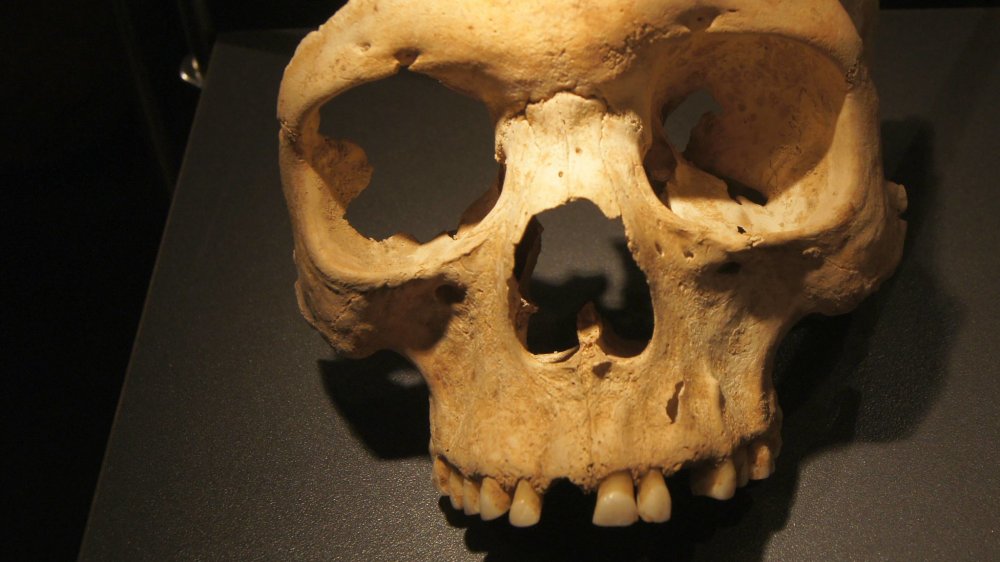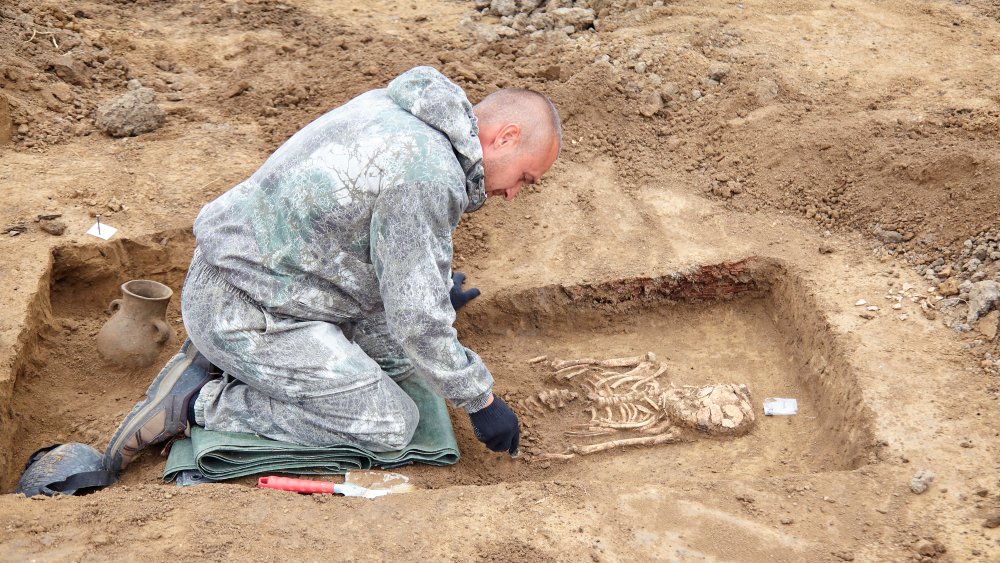Why The Mystery Of Herxheim Is So Disturbing
In the nineties, construction in Herxheim, a municipality in south-western Germany, uncovered a buried enclosure that dated to the Early Neolithic Linear Pottery Culture, an archeological timeframe that dates from about 5500 B.C.E. to 4500 B.C.E and is defined by its combination of linearly designed bowls, agriculture, and the remains of hunter gathering. As Joerg Orschiedt and Miriam Noel Haidle reported to the Journal of Conflict Archaeology in 2006, however, the more notable aspect was that the bones of more than 450 humans, which all dated to a similar fifty-year range, were buried together in a series of ditches.
Further examination of the archaeological site, by a team who published their findings in Antiquity, increased the number to 500 but considering that only half the enclosure had been excavated, they felt certain that another 500 were left buried. Both studies, however, found that the corpses had undergone types of postmortem modifications, from cutting meat off the bodies to the unusually large proportion of removed calottes (the top of one's skull): "Identical procedures in a peri-mortal stage were followed in severing the calottes, even in those cases where separations were incomplete. Well-aimed hits on the frontal bones, mostly to the center of the foreheads and above the orbits, preceded blows along the line above the ears to remove the facial bones and the basicranium with the lower portions of the occipital, parietal and tem-poral bones."
Piles of systematically separated skulls have been unearthed, yet no one knows why.
Choose your theory
In the 2006 study, Orschiedt and Haidle determined that as far as they can tell, all age groups are represented, as well as both men and women, in the bone pile. All were healthy, as well — again as far as they could tell. In the end, they decided the most probable answer was that the site was a ritual center, or necropolis, in which the meat was stripped from the bone in a ritualistic manner, like the preservation of the dead in ancient Egypt.
However, the Antiquity paper came out with a very different answer: cannibalism. Neither explanation, though, addresses the other mysterious aspect of the site, as Andrea Zeeb-Lanz, project leader of the Cultural Heritage Agency of the state of Rhineland-Palatinate, explained to Der Spiegel: "50 [years] is the maximum. It could all have happened in just two years or even five weeks." Whether they skinned people for religious purposes, or for a feast, or both, the practice lasted for about two generations — a narrow window for archaeology. And the violence in smashing skulls beyond recognition, as archaeologist Nick Thorpe of the University of Winchester said to Wired, gives "an impression of the destruction of individual identity, a kind of psychic violence against the person."
Considering that it's a ditch of mutilated corpses, a "choose your own adventure" approach is best, for the foreseeable future. But whichever theory you find more appealing, the gruesome nature of the butchery remains evident.

